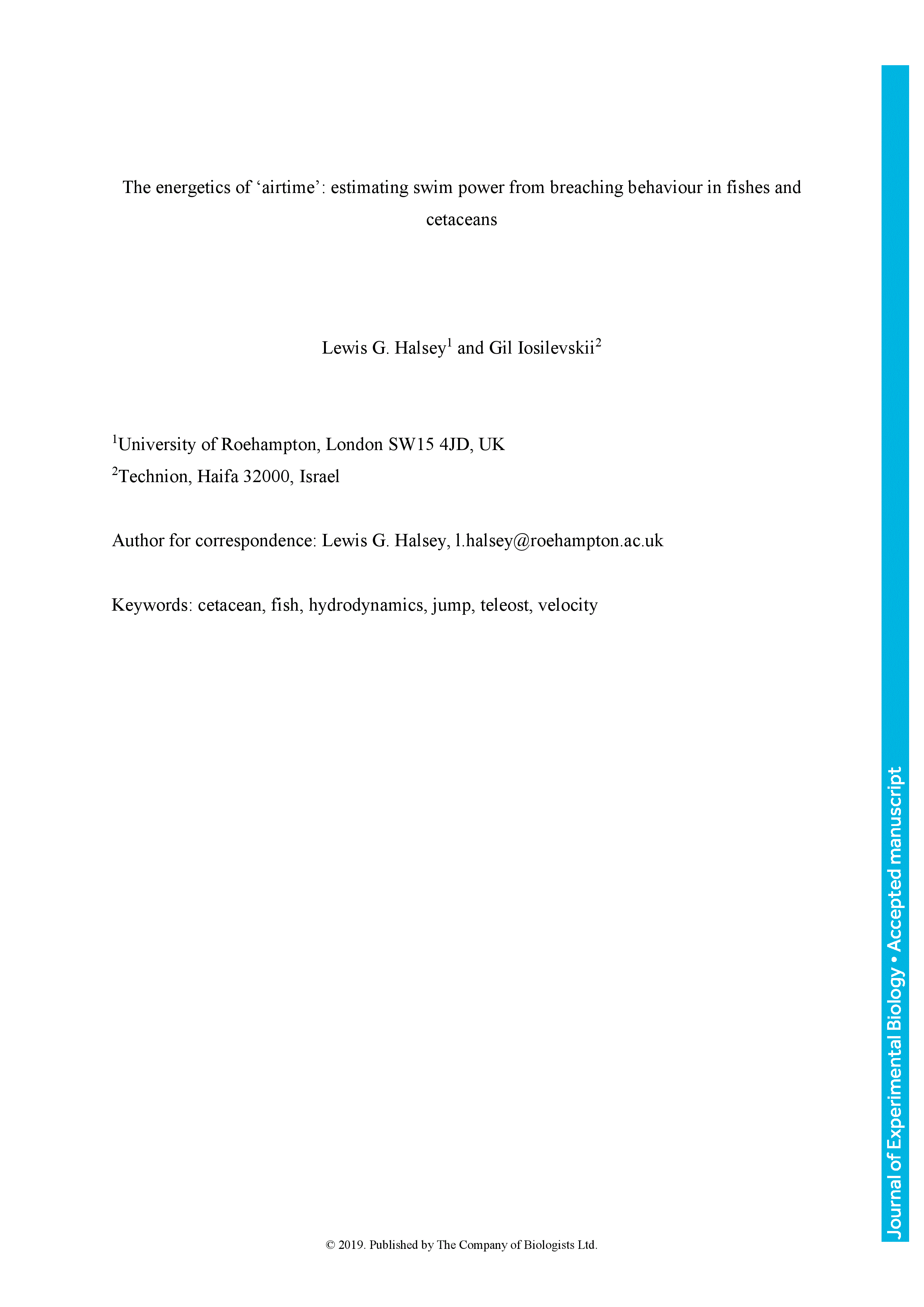Maximum swimming behaviour is rare in the laboratory or the wild, limiting our understanding of the top-end athletic capacities of aquatic vertebrates. However, jumps out of the water - exhibited by a diversity of fish and cetaceans - might sometimes represent a behaviour of maximum burst effort. We collected data on such breaching behaviour for 14 fish and cetacean species primarily from online videos, to calculate breaching speed. From newly derived formulae based on the drag coefficient and hydrodynamic efficiency we also calculated the associated power. The fastest breaching speeds were exhibited by species 2 m in length, peaking at nearly 11 m/s; from this length, as species size decreases the fastest breaches become slower, while species larger than 2 m do not show a systematic pattern. The power associated with the fastest breaches was consistently about 50 W/kg (equivalent to 200 W/kg muscle) in species from 20 cm to 2 m in length; this value may represent a universal (conservative) upper boundary. And it is similar to the maximum recorded power output per muscle mass recorded in any species of similar size, suggesting that some breaches could indeed be representative of maximum capability.
The energetics of ‘airtime’: estimating swim power from breaching behaviour in fishes and cetaceans
Currently Viewing Accepted Manuscript - Newer Version Available
- Split-screen
- Views Icon Views
- Open the PDF for in another window
-
Article Versions Icon
Versions
- Version of Record 13 January 2020
- Accepted Manuscript 01 January 2019
- Share Icon Share
-
Tools Icon
Tools
- Search Site
Lewis G. Halsey, Gil Iosilevskii; The energetics of ‘airtime’: estimating swim power from breaching behaviour in fishes and cetaceans. J Exp Biol 2019; jeb.216036. doi: https://doi.org/10.1242/jeb.216036
Download citation file:
Advertisement
2023 JEB Outstanding Paper Prize shortlist and winner

The JEB Editors are delighted to announce the shortlisted authors for the 2023 JEB Outstanding Paper Prize. Read the winning paper - Tiny spies: mosquito antennae are sensitive sensors for eavesdropping on frog calls - by Hoover Pantoja-Sanchez and Brian Leavell from Ximena Bernal's lab at Purdue University, USA.
JEB Science Communication Workshop for ECRs

If you’re an early-career researcher interested in science communication and are attending the SEB Annual Conference in Prague this summer, come a day early and join the JEB Editors at a sci comm workshop to learn the key writing skills needed to promote your research to a broad audience beyond your peers (1 July at 14.30-17.30). Places are limited to 24 attendees, and applicants should apply through the SEB registration page by 30 April 2024.
Bridging the gap between controlled conditions and natural habitats in understanding behaviour

Novel technologies enable behavioural experiments with non-model species, in naturalistic habitats and with underexplored behaviours. In their Commentary, Scholz and colleagues discuss how to obtain a deeper understanding of the natural ecology and lifestyle of study animals.
Beluga metabolic measures could help save species

To help save animals from extinction, it’s important to understand what each species needs to survive. This led Jason John et al. to measure the metabolic rates of captive belugas to develop a ‘fish calculator’ showing that the whales need to eat ~23 salmon per day.
ECR Workshop on Positive Peer Review

Are you an ECR looking for tips on how to write concise, astute and useful manuscript reviews? If so, join the JEB Editors at a 2-hour JEB-sponsored Workshop on Positive Peer Review at the Canadian Society of Zoologists annual meeting in Moncton on 9 May 2024 at 13.00-15.00. There are 25 spaces for ECRs and selection is first come, first serve. To sign up, check the ECR Workshop box when you register for the CSZ meeting.



